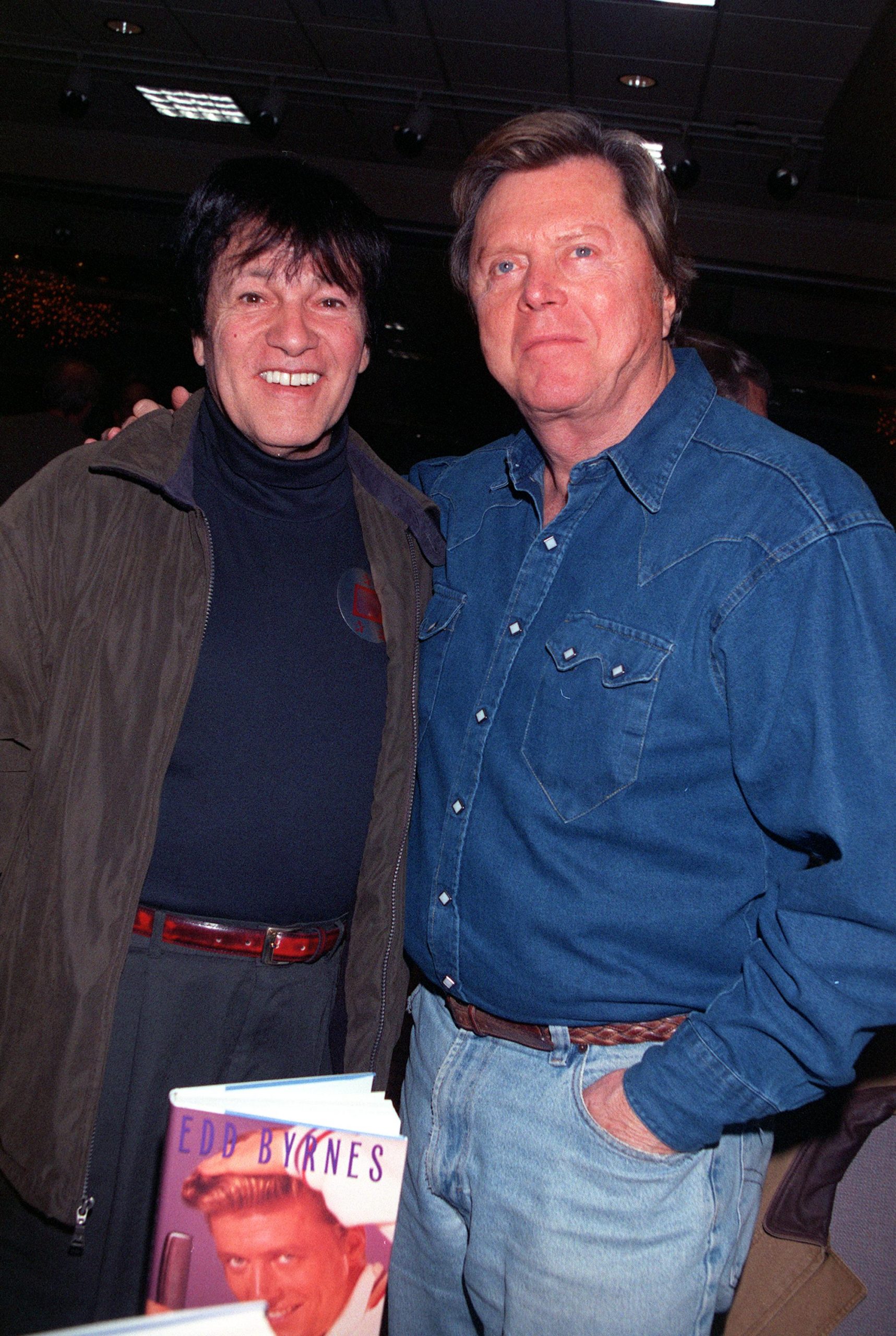Tommy Sands Net Worth: Exploring The Financial Footprint Of A Beloved Star
Many folks often wonder about the financial lives of stars who captivated audiences in earlier times. It's a natural curiosity, really, to consider how much wealth someone like Tommy Sands, a true sensation from a bygone era, might have accumulated over a long and varied career. His story, you know, touches on the very heart of American entertainment, showcasing a journey through music, film, and television that left a lasting impression on so many fans.
For those who grew up humming along to his tunes or catching his performances on screen, Tommy Sands represented a certain kind of classic charm. His rise to fame in the 1950s was, in a way, quite swift, bringing him into the homes and hearts of countless people. This article is going to take a look at the different aspects of his professional life that contributed to his financial standing, offering a glimpse into the economic realities of being a popular entertainer in his time.
Understanding someone's net worth isn't just about a single number; it's more about the path they took, the opportunities they seized, and the lasting value of their work. We’ll explore the various avenues through which Tommy Sands earned his living, from record sales and concert tours to movie roles and television appearances, and how these elements, more or less, shaped his overall financial picture, especially considering his recent passing in December 2024.
Table of Contents
- Tommy Sands: A Brief Life Story
- Personal Details & Bio Data
- The Career Journey: Music, Film, and Television
- Understanding Income Streams for Entertainers of His Era
- Estimated Net Worth: What the Numbers Suggest
- Legacy and Enduring Influence on His Financial Footprint
- Frequently Asked Questions About Tommy Sands
Tommy Sands: A Brief Life Story
Tommy Sands, born on August 27, 1937, in Chicago, Illinois, was a significant figure in American popular culture, particularly during the mid-20th century. His early life saw him surrounded by music, as his father was a pianist and his mother a big band singer. This upbringing, you know, really set the stage for his own musical aspirations. By his teenage years, he was already performing, showcasing a talent that seemed, well, quite natural for the stage.
He shot to national fame in 1957 after appearing on an episode of "Kraft Television Theatre" titled "The Singin' Idol." His performance, which included the song "Teen-Age Crush," turned him into an overnight sensation, making him a true teen idol. This moment, basically, changed everything for him, launching him into the public eye with incredible speed. His clean-cut image and smooth vocal style resonated with young audiences, securing his place in the hearts of many.
Following his musical breakthrough, Tommy Sands also pursued a successful acting career, appearing in several films and television shows. He shared the screen with some very big names and, in some respects, broadened his appeal beyond just music. His marriage to Nancy Sinatra in 1960 further placed him in the celebrity spotlight, even though that union, like many, was a relatively short one, ending in 1965. Throughout the decades that followed, he continued to perform and act, maintaining a presence in the entertainment world until his peaceful passing on December 22, 2024, at the age of 87.
Personal Details & Bio Data
| Full Name | Thomas Adrian Sands |
| Date of Birth | August 27, 1937 |
| Date of Passing | December 22, 2024 |
| Age at Passing | 87 years |
| Birthplace | Chicago, Illinois, USA |
| Nationality | American |
| Occupation | Singer, Actor |
| Years Active | 1950s – 2000s (approx.) |
| Spouse(s) | Nancy Sinatra (m. 1960; div. 1965), Sheila Wallace (m. 1970; div. 1985), Susan Barnett (m. 1990) |
| Notable Works | "Teen-Age Crush" (song), "Sing, Boy, Sing" (film), "Mardi Gras" (film) |
The Career Journey: Music, Film, and Television
Tommy Sands' career was, in a way, a shining example of the multi-talented entertainer of his era. He didn't just stick to one thing; he branched out, exploring different avenues of performance. This versatility, you know, was a key factor in his longevity and, arguably, in building his financial foundation. His journey began in music, which then opened doors to the silver screen and the growing world of television.
Musical Success and Record Sales
His breakthrough hit, "Teen-Age Crush," became a massive success in 1957, selling over a million copies and earning him a gold record. This kind of immediate popularity meant significant royalties from record sales, which, back then, were a major source of income for recording artists. He released several albums and singles throughout the late 1950s and early 1960s, many of which performed quite well on the charts, further adding to his earnings from music.
Beyond record sales, live performances were a huge part of an artist's income. Tommy Sands, with his teen idol status, commanded good fees for concerts, club appearances, and touring. He played at various venues, from small clubs to larger auditoriums, bringing his music directly to his fans. These engagements, often involving extensive travel, represented a steady and substantial flow of money for him and his team, more or less ensuring a consistent income stream during his peak years.
The music industry of the 1950s and 60s, it's worth noting, operated a little differently than today. Artists often signed contracts that, while offering upfront money, sometimes limited their long-term royalty percentages. However, for a star of Sands' caliber, the sheer volume of sales and performances would still translate into a very comfortable living. His early success, basically, set him up for a financially strong period, allowing him to elevate his lifestyle and invest in other areas of his career.
Hollywood Roles and Earnings
After his musical triumph, Hollywood came calling, and Tommy Sands made the leap to acting. His first major film role was in "Sing, Boy, Sing" (1958), a movie crafted around his teen idol persona. This film, and subsequent roles in movies like "Mardi Gras" (1958) and "Babes in Toyland" (1961), provided him with acting salaries, which, for a rising star, could be quite substantial. Film roles offered not only income but also, you know, a wider reach for his celebrity, keeping him in the public eye.
Working on feature films involved contracts that specified his pay per picture, and for someone with his level of fame, these figures would have been significant for the time. These roles, while perhaps not always critically acclaimed, were important for his financial portfolio. They added another layer to his earning potential beyond just music, showcasing his versatility and, in a way, solidifying his status as a multifaceted entertainer. You can browse his filmography to see the range of his acting work, which, naturally, contributed to his overall earnings.
Later in his career, he took on supporting roles in films such as "The Longest Day" (1962) and "None but the Brave" (1965), which, while not starring vehicles, still provided steady work and income. These roles, typically, came with their own set of compensation, contributing to his accumulated wealth over the years. The income from acting, therefore, was a key component of his financial success, alongside his musical endeavors.
Television Appearances and Endorsements
Television, a rapidly expanding medium in the 1950s and 60s, also played a significant part in Tommy Sands' career and earnings. Beyond his initial breakthrough on "Kraft Television Theatre," he made numerous guest appearances on popular variety shows, talk shows, and even dramatic series. These appearances, very often, paid well and kept him relevant to a broad audience, helping to sustain his star power.
Think about the sheer number of television specials and episodic roles that were available back then; for a known face like Sands, opportunities were plentiful. Each appearance, you know, added to his income, whether it was a one-off performance or a recurring guest spot. This consistent visibility on television was, in some respects, a continuous stream of income, complementing his music and film work. It allowed him to stay perfectly in season with the changing media landscape.
While specific details about endorsement deals are often private, it's common for popular figures of his stature to engage in commercial endorsements or tie-ins. These types of agreements, where a celebrity promotes a product or brand, can be quite lucrative. Though hard to quantify without specific data, it's plausible that Tommy Sands, given his clean-cut, classic American cool image, might have had such opportunities, further diversifying his income streams over the years. This would have added to his financial collection, so to speak.
Understanding Income Streams for Entertainers of His Era
To truly get a sense of Tommy Sands' financial standing, it helps to understand how entertainers, particularly those from the mid-20th century, typically earned their money. It wasn't just about a single big hit; it was a complex web of various sources. Royalties from music sales, for instance, were a foundational element. Every record sold meant a small percentage for the artist, and with millions of records moved, that could add up to a substantial sum. However, the exact percentage often varied widely based on the record deal, which, you know, could be quite different from artist to artist.
Concert tours and live performances were, arguably, the most direct and often most profitable way for musicians to earn. For a popular act like Tommy Sands, touring meant not just performance fees but also, in many cases, a share of ticket sales and merchandise. These tours could be extensive, lasting for weeks or months, and the cumulative earnings from them were a major contributor to an artist's wealth. The grind of the road, basically, paid off in a big way.
Beyond music, film and television work offered distinct income opportunities. Actors received salaries for their roles, with bigger names commanding higher fees. For someone transitioning from music to acting, like Sands, initial film contracts might have been a bit lower but would typically increase with subsequent roles and growing popularity. Residuals, or payments for reruns of TV shows or repeated broadcasts of films, also contributed to income over time, providing a passive stream long after the initial work was done. This kind of long-term payment, you know, added to an artist's financial stability.
It's also worth remembering that financial management practices for entertainers in that era weren't always as sophisticated as they are today. Many artists, unfortunately, faced challenges with managing their earnings, sometimes leading to financial difficulties later in life despite significant earlier success. While we don't have specific details about Sands' personal financial strategies, these broader trends are important to consider when thinking about long-term wealth accumulation for stars of his generation. The financial landscape was, in a way, less transparent and more unpredictable than what we see now.
Estimated Net Worth: What the Numbers Suggest
Pinpointing an exact net worth for a private individual, especially one from an earlier generation of entertainers, is, naturally, quite challenging. Public records typically don't disclose such personal financial details. However, based on his extensive career in music, film, and television, alongside the typical earnings for stars of his stature during his active years, we can form a reasonable estimation of Tommy Sands' financial standing at the time of his passing in December 202

Tommy Sands Net Worth - Wiki, Age, Weight and Height, Relationships

Tommy Sands Net Worth - Wiki, Age, Weight and Height, Relationships

Pictures of Tommy Sands